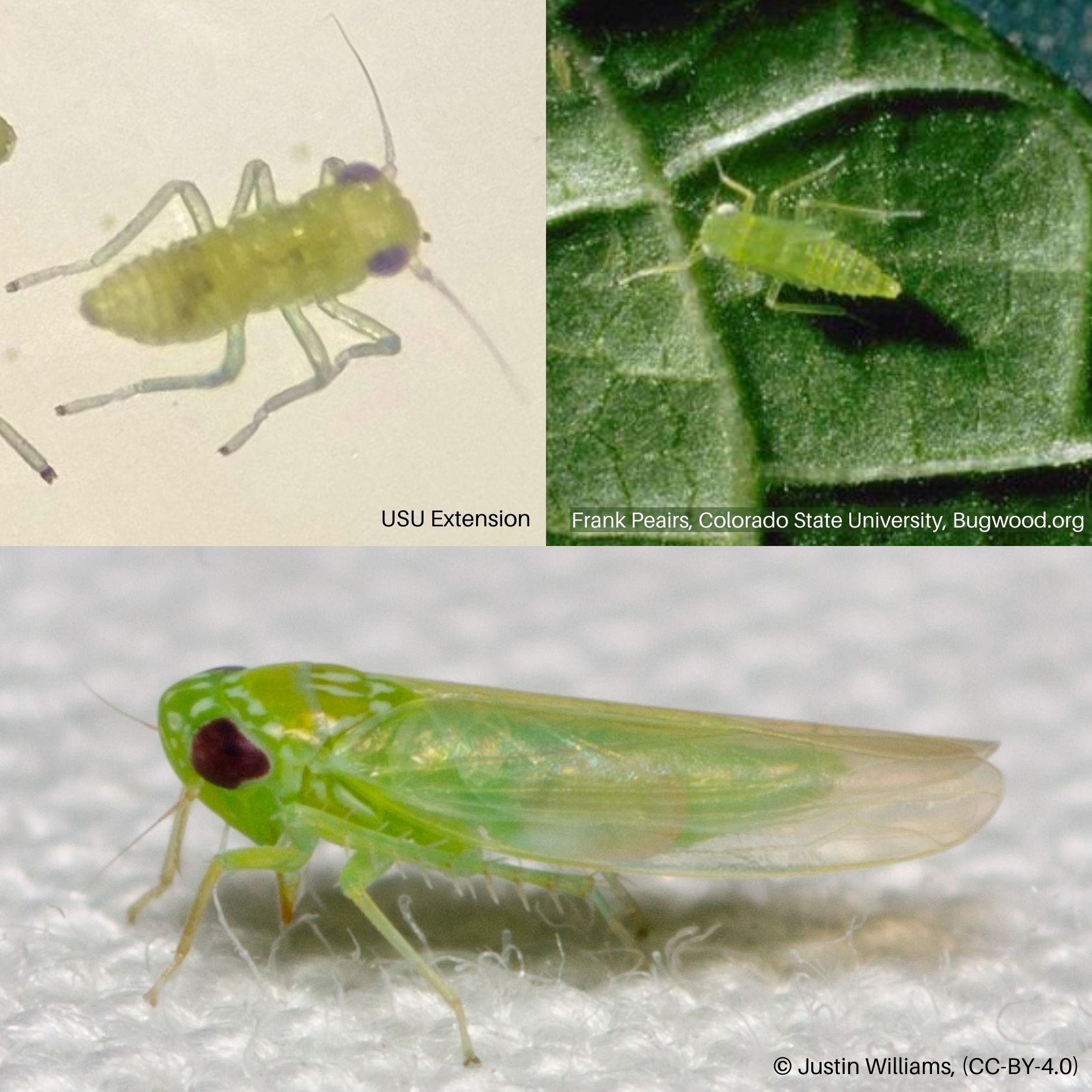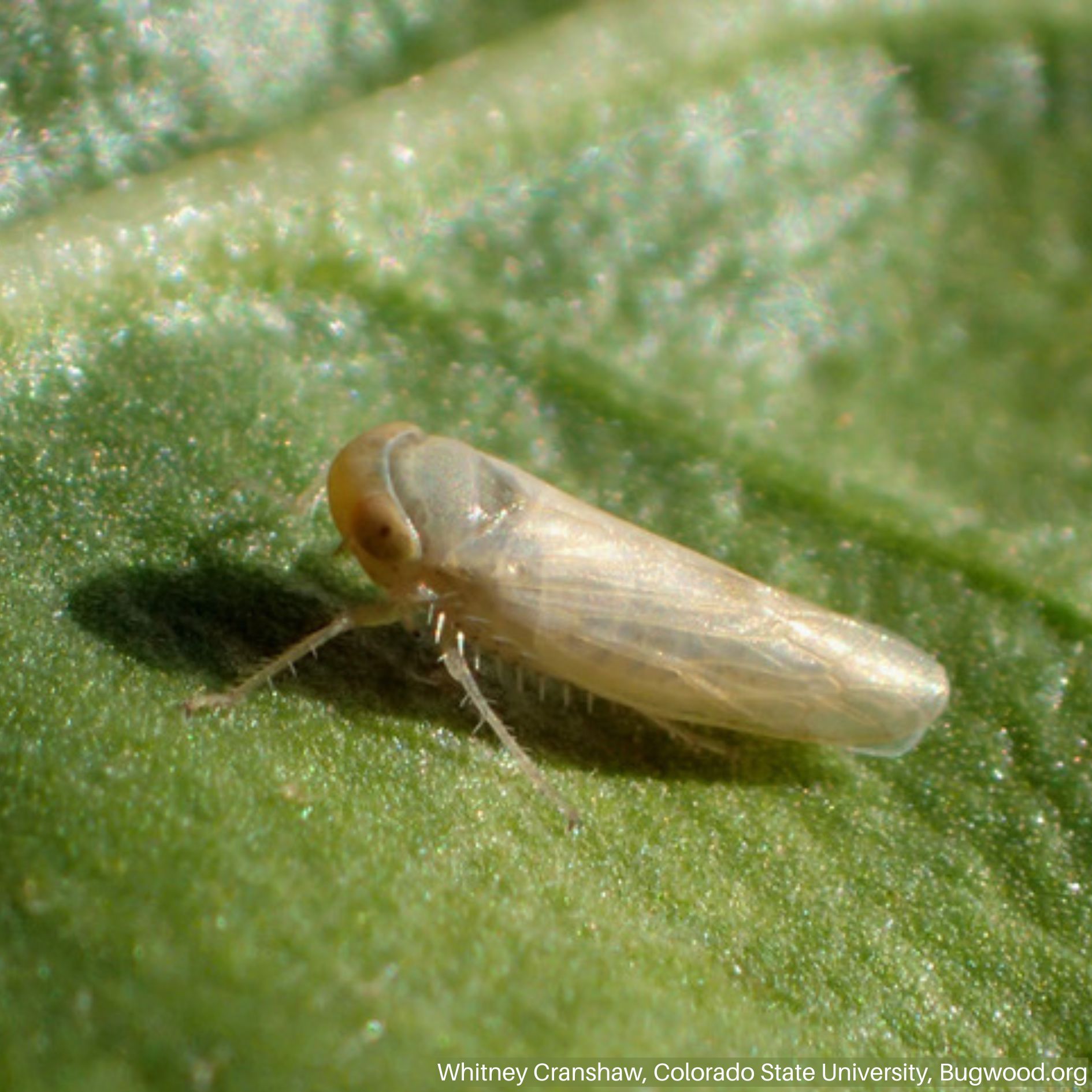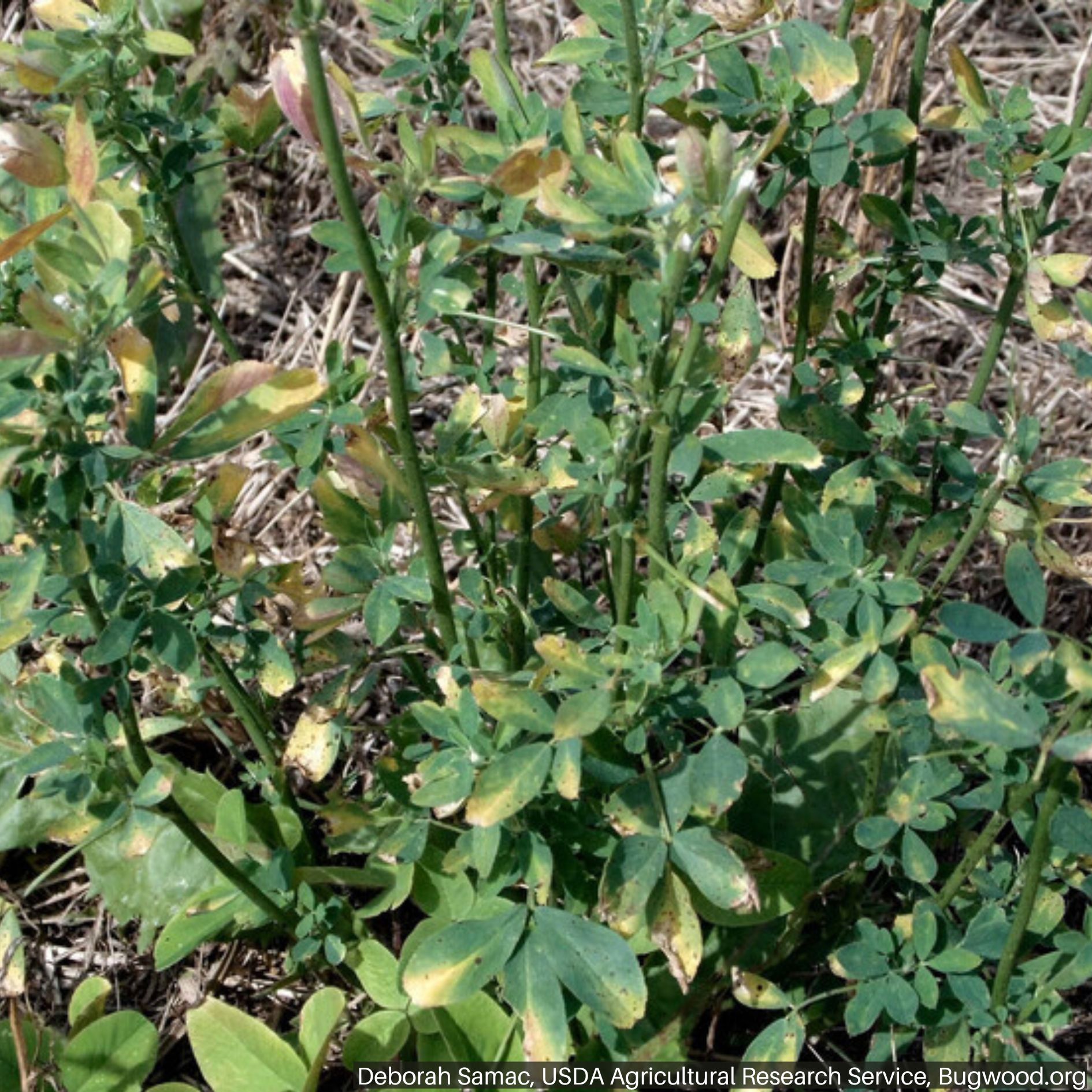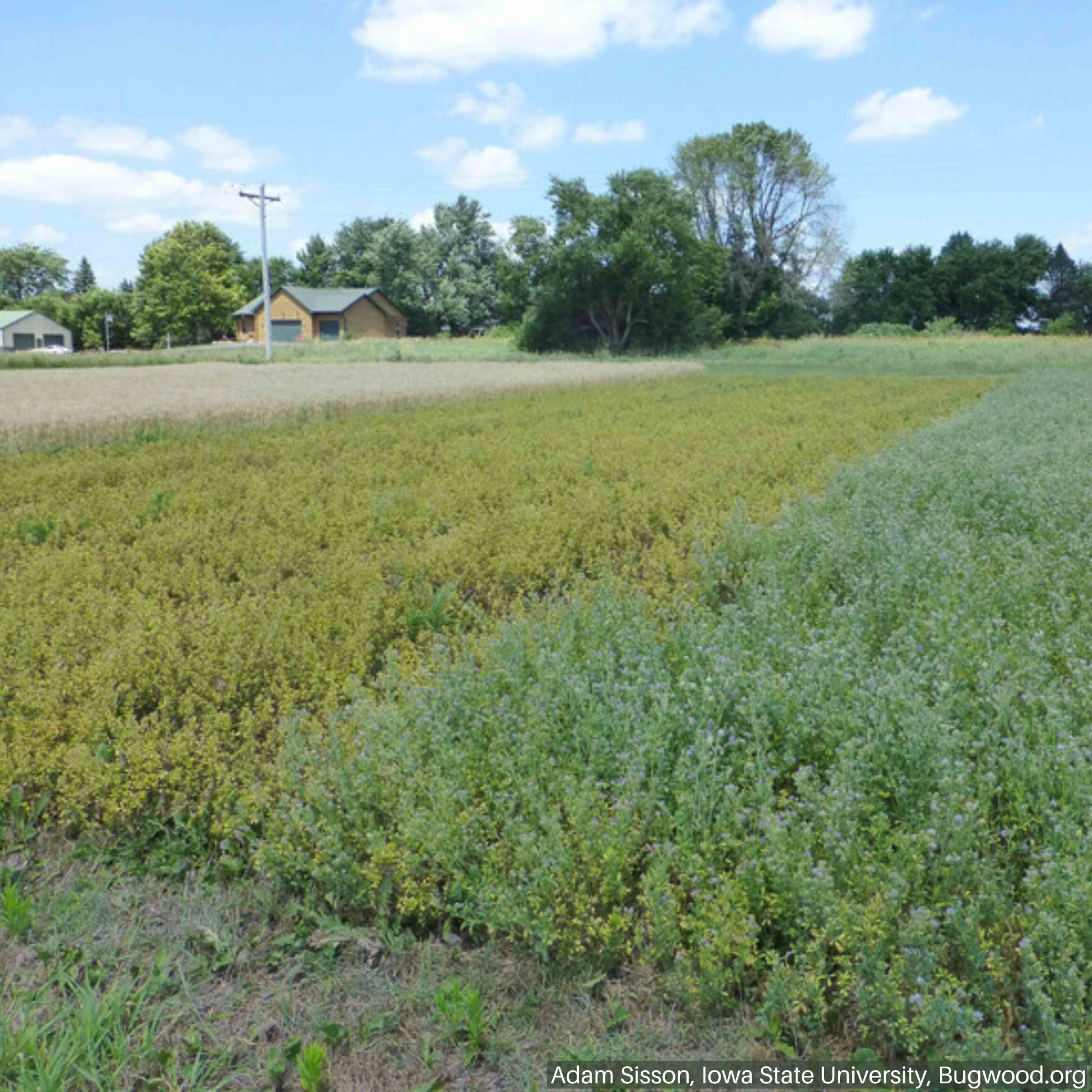Leafhoppers
 Potato Leafhopper Life Stages
Potato Leafhopper Life Stages Beet Leafhopper
Beet Leafhopper Yellowed and burned foliage due to leafhopper feeding
Yellowed and burned foliage due to leafhopper feeding Leafhopper susceptible alfalfa (left) vs. resistant alfalfa (right)
Leafhopper susceptible alfalfa (left) vs. resistant alfalfa (right)HOSTS
- Alfalfa
- Brassicas
- Corn
- Cucurbits
- Hemp
- Leafy Greens
- Legumes
- Potatoes
- Solanaceae
- Root Crops
DESCRIPTION
Adults and nymphs jump when disturbed and have wedge-shaped bodies varying in color from pale green, gray, or tan. Adults are winged, but not nymphs.
BIOLOGY
Egg | Nymph | Adult
Leafhoppers have multiple generations per year. Adults overwinter on weeds and volunteer plants in southern Utah. Adults migrate north on spring wind currents.
- Adults move into cultivated areas in the early summer when weeds begin to dry up and for the first 6-8 weeks of planting.
- Adults and nymphs are difficult to differentiate from other leafhopper species.
- Symptoms of curly top virus may occur in susceptible hosts before nymphs or adults are seen.
SYMPTOMS
Adults and nymphs feed with piercing sucking mouthparts which can cause shriveled and burned leaves under severe infestations. Some hoppers can transmit curly top virus to beans, beets, cucurbits, flax, pepper, potato, spinach, squash, Swiss chard, and tomato. Curly top virus symptoms include small twisted leaves with purple veins, thickened crisp leaves, yellowing and death of mature leaves, small fruits that ripen prematurely, reduced fruit quality and yield, and stunted growth.
GENERAL MANAGEMENT
-
Direct feeding damage is not economically important, but beet leafhoppers can infect plants with curly top virus for which there is no cure; remove infected plants to slow virus spread.
- Exclude leafhoppers with floating row covers.
- Shade tomato and pepper plants.
- Destroy and remove plant debris.
- ‘Hide’ susceptible plants among resistant plants.
INSECTICIDES
Insecticide applications directed at leafhoppers are ineffective.

